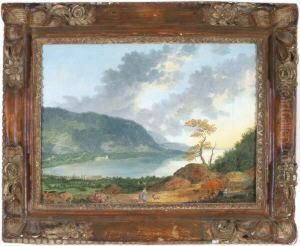Carl Theodor Dalberg Paintings
Carl Theodor Anton Maria Reichsfreiherr von Dalberg was a German statesman and an influential figure during the time of the French Revolutionary Wars and the Napoleonic Era. He was not primarily known as an artist in the traditional sense, but his contributions to the political and cultural landscape of his time were significant.
Born on February 8, 1744, in Mannheim, Dalberg came from a noble family and was educated at the University of Göttingen. He pursued a career in the church, rising through the ranks to become the Elector-Archbishop of Mainz and Arch-Chancellor of the Holy Roman Empire. Dalberg's position as an Elector-Archbishop made him one of the most powerful and influential clerics within the Empire.
During his political career, Dalberg was known for his enlightenment views and his efforts to reform the territories he governed in accordance with these principles. When the Holy Roman Empire was dissolved in 1806, he was made Grand Duke of Frankfurt by Napoleon Bonaparte. Despite his cooperation with the French regime, Dalberg tried to navigate the complex political landscape to maintain some degree of autonomy and promote the welfare of his subjects.
Dalberg was also a patron of the arts and sciences, and his court at Aschaffenburg became a center for writers, artists, and scholars. His commitment to cultural matters, alongside his political activities, helped to foster a vibrant intellectual and cultural climate in the territories under his rule.
He died on February 10, 1817, in Regensburg. Although his political and ecclesiastical roles are what primarily define his historical significance, his impact on the cultural and intellectual life of his era remains a noteworthy aspect of his legacy.
